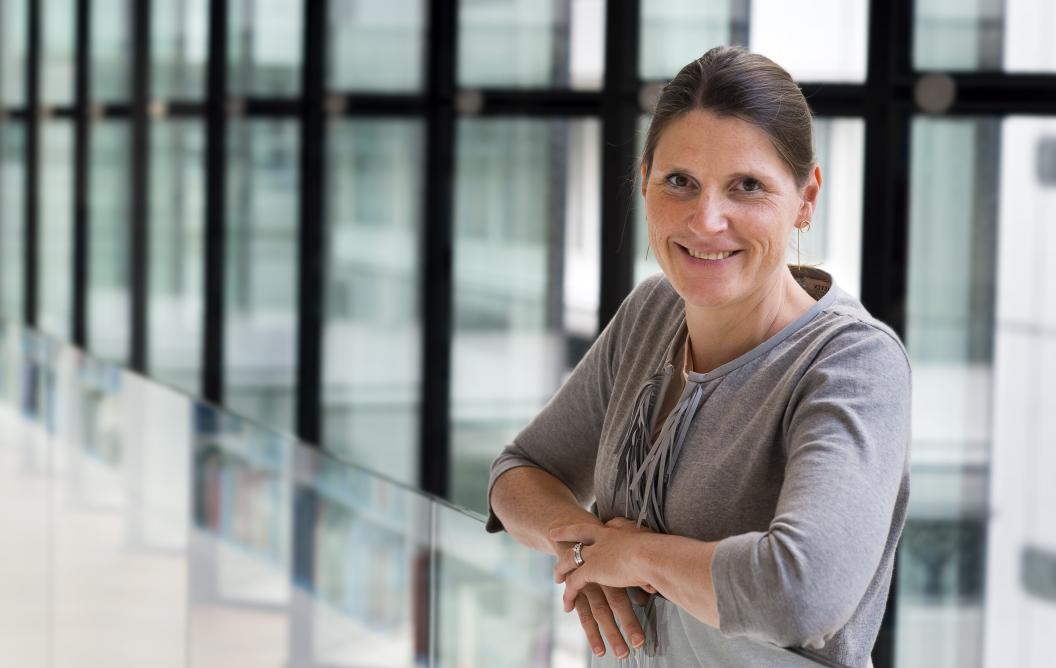'Gut thoughts and feelings' wins the Klokhuis Wetenschapsprijs
Veerle Melotte has won the Klokhuis Wetenschapsprijs for her discovery of the involvement of the Enteric Nervous System (ENS) in colorectal cancer. Klokhuis is a Dutch TV programme explaining science to children from 9 to 12 years. The annual prize comes with a full episode dedicated to the winner’s research: the Enteric Nervous System (ENS).
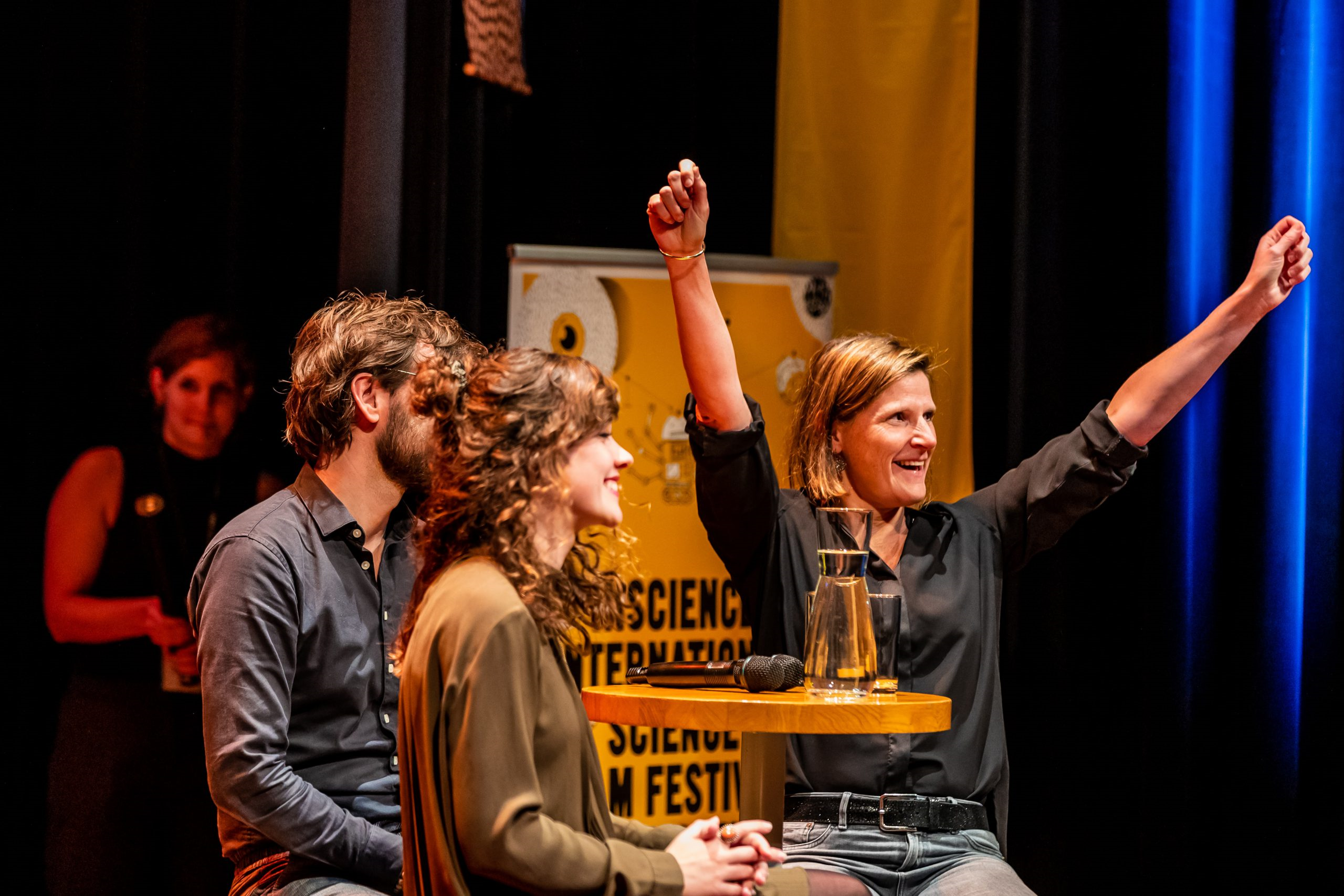
UM NDRG4 PhD
During her PhD at Maastricht University, Melotte found out that the gene NDRG4 is a biomarker for colorectal cancer, one of the most common cancers. The resulting patent is already a clinical reality for patients in the USA: a test for methylated NDRG4 is included in the FDA-approved Cologuard, a home screening kit for colon cancer. “It is nice that the outcome of our scientific work can really help people”
However, Melotte’s curiosity wasn’t satisfied – she decided to dig deeper. “This type of cancer usually emanates from the epithelial cells – the lining of the gastrointestinal tract – but NDRG4 is expressed in the Enteric Nervous System (ENS) in the layers beneath that. It turned out that the enteric nerves link to the epithelial cells and secrete neurotransmitters into the tumour’s microenvironment – which promotes its growth.” This link – that the ENS and colorectal cancer are communicating – is a scientific breakthrough.
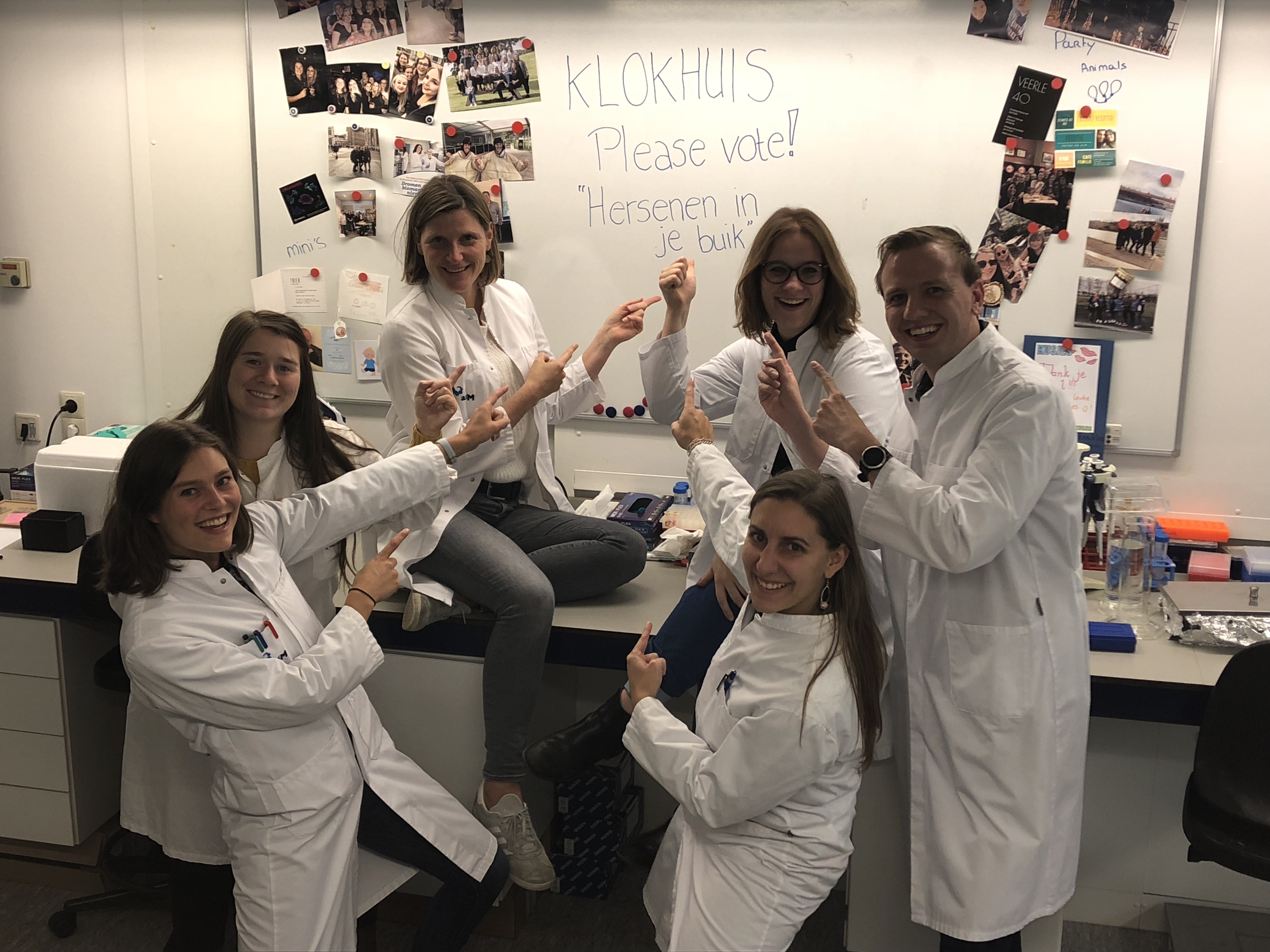
The size of a cat’s brain
“The ENS is the brain of the gut, sometimes called the second brain, which is very important for gut function.” It’s one of the divisions of the autonomic nervous system, which regulates bodily functions such as heart rate, arousal or digestion. While it communicates with the Central Nervous System, the one associated with conscious activity, it functions autonomously from our brain.
It extends throughout the whole gastrointestinal tract and encompasses 200 million neurons and glial cells – almost the size of a cat’s brain– all of them busy communicating to make you digest your food while you read this. “It’s been investigated for a while, but mostly in the context of genetic illnesses like Hirschsprung’s disease. Research into the gut brain axis, how your first and second brain interact, is relatively recent.”
Digestive breakthroughs take time
Eventually Melotte and her group members managed to show that the cancer and the ENS communicate. Among other things, the ENS secretes neuromodulators, which make it easier for the tumour to grow. But it was a long, hard way to get there. “Everyone in the field said the enteric nerves couldn’t be involved in colorectal cancer but I was a stubborn and thought’, ‘If it’s so important for gut function, why not for colorectal cancer?”
Melotte’s research combines oncology, neurology and gastroenterology. She thinks this kind of interdisciplinary daring is vital – as is time. She had that luxury because she got a permanent position relatively early on in her career. “It took me six years and we only submitted the paper two weeks ago. It just takes a long time to come up with ground-breaking ideas and work them out.”
Success proves her right but she too had to answer awkward questions about the low number of papers when e.g. applying for grants. While she understands that researchers need to be evaluated on certain standardised criteria, she thinks this has detrimental side effects. “You have to follow the data, sometimes a long way …. I see a lot of brilliant scientist leaving because they didn’t have enough time to work out their ideas. I was very lucky in that respect.”
Managing expectations and educating children
She also appreciates all the attention her research is getting, from being a speaker at the Pleasure, Art & Science festival to being shortlisted for the Klokhuis science prize. “The nomination is an honour and it’s nice to see that there’s a lot of interest in the topic.” Melotte is aware of the opportunity to enthuse people for her topic – and the responsibility to manage expectations.
“That’s the trade-off if you move into fundamental research: you come up with new ideas and that’s exciting, an adventure… At the same time, it’s farther from clinical reality. If we’re lucky these neurons will be a target for cancer therapy 20 years down the line. Right now, we can only advise people to live and eat healthily.”
The outreach activities have been a learning curve for her too: “I had to learn more about the ENS in general to explain it to a broader public… Among scientists, you mainly talk about cell-cell communication or molecules, but that’s not what the general public is interested in.”

Also read
-
GMO bacteria to target tumours
PhD candidate Jella van de Laak on how a genetically modified bacterium fights solid cancer tumours at their oxygen-deprived core.
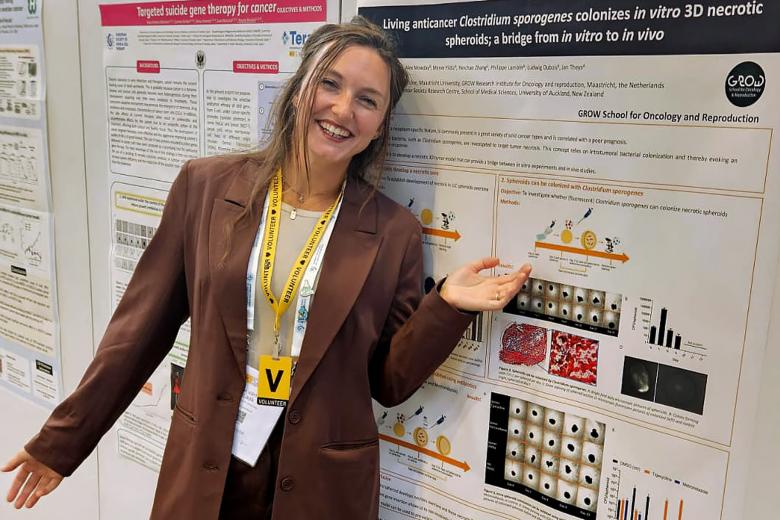
-
Fresh air
Newly appointed professor Judith Sluimer (CARIM) talks about oxygen in heart functioning and the 'fresh air' the academic world needs.
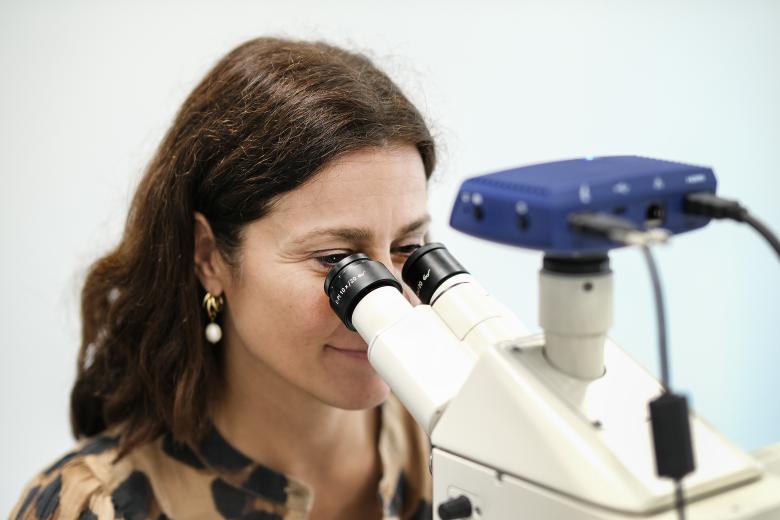
-
GROW research: all-in-one test for genetic defects in embryos🧪
Researchers at Maastricht UMC+ and GROW have developed a technique that can analyse the entire genome in a single test, allowing for faster determination of embryos suitable for successful pregnancy.

